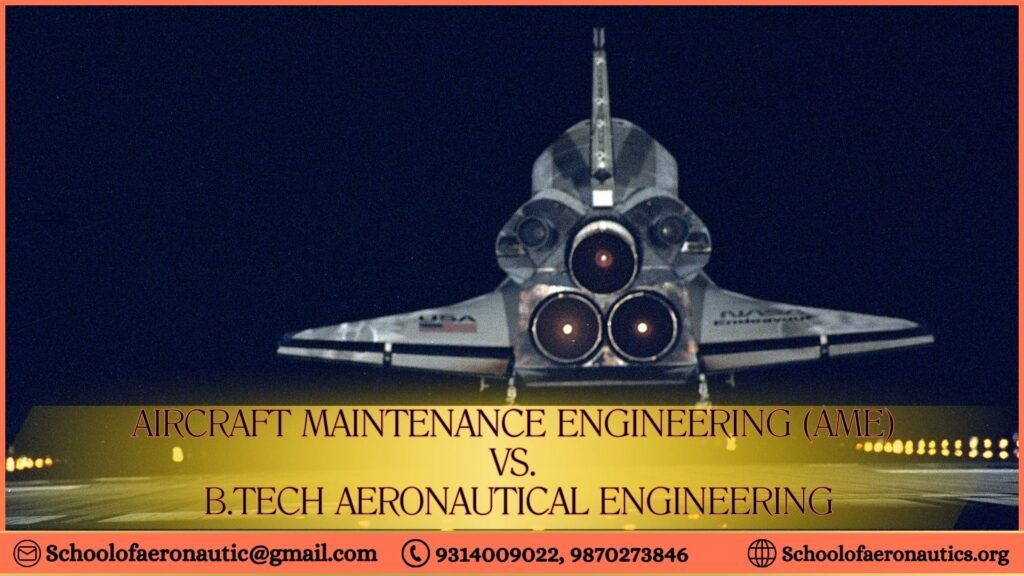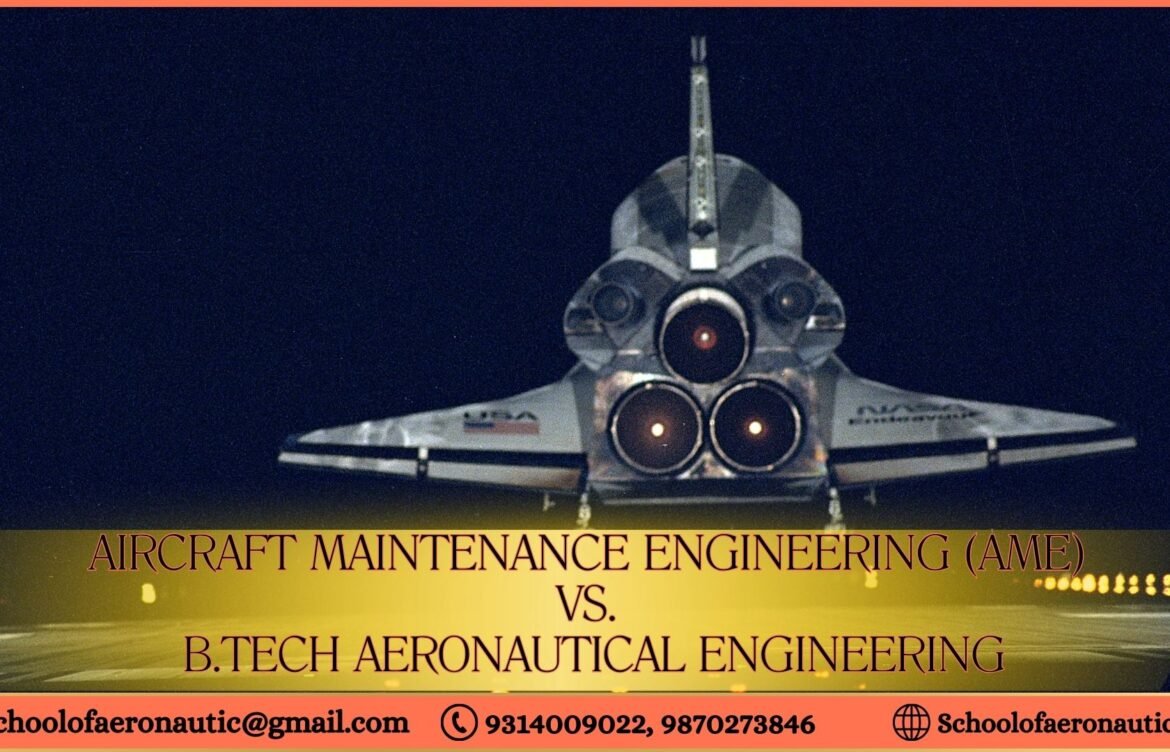Aircraft Maintenance Engineering (AME) vs. B.Tech: Understanding the Differences and Equivalencies

When deciding on a career in the aeronautics or engineering field, numerous scholars grapple with the choice between pursuing Aircraft conservation Engineering( AME) or a B.Tech( Bachelorette of Technology) degree. While both paths offer promising careers, they’re unnaturally different in their focus, issues, and career openings.
Aircraft maintenance Engineering( AME) is a technical program designed to train individuals in maintaining, repairing, and icing the airworthiness of aircraft. It is n’t a degree but a professional licensing course regulated by aeronautics authorities like the Directorate General of Civil Aviation( DGCA) in India. AME focuses on practical skills and assiduity-specific knowledge needed to check and certify an aircraft as safe for operation. Completing this course and carrying a DGCA license qualifies an individual to work directly with airlines, maintenance associations, or aeronautics enterprises as a certified Aircraft maintenance engineer. This profession is critical to aeronautics safety, as AMEs are responsible for icing that every aircraft is flight-ready.
In discrepancy, a B.Tech is a four year undergraduate degree program offered by universities. For those interested in aeronautics, B.Tech options like Aeronautical Engineering or Aerospace Engineering cover theoretical and practical aspects of aircraft and spacecraft design, propulsion systems, and avionics. Unlike AME, which is hardly concentrated on maintenance, a B.Tech degree provides a broad education in engineering, enabling graduates to explore different places beyond aeronautics, similar as mechanical engineering, robotics, or indeed software development. While B.Tech graduates are equipped with chops for design and development, they do n’t hold the certification demanded to maintain or certify an aircraft directly.
The duration and structure of these courses also differ significantly. An AME program generally takes 2- 4 times, with a strong emphasis on hands- on training and On- the- Job Training( OJT) with DGCA- approved associations. The thing is to prepare campaigners for nonsupervisory examinations and practical assessments needed for licensing. On the other hand, a B.Tech spans four times, fastening on semester-wise academic literacy, exploration systems, and externships, which frequently feed to a broader engineering environment.
Career openings also vary between the two paths. AMEs generally find employment in places directly related to aircraft maintenance, similar as with airlines like IndiGo or Air India, conservation form associations( MROs), and aeronautics manufacturing enterprises. Their liabilities are largely technical, fastening on functional safety and compliance. Meanwhile, B.Tech graduates have a wider range of options. Those in aeronautical or aerospace engineering may work in exploration and development, design, or manufacturing for associations like Boeing, Airbus, or ISRO, and they also have the inflexibility to transition into non-aviation sectors.
Another distinction lies in transnational recognition. AME licenses, particularly those aligned with ICAO norms, are universally honored, allowing professionals to work in aeronautics sectors worldwide. B.Tech degrees, while widely accepted as academic qualifications, may bear fresh instruments for specific aeronautics places abroad. payment prospects also reflect these differences, with starting packages for AMEs ranging from ₹ 4- 8 LPA in India, frequently adding significantly with international certifications. B.Tech graduates, depending on their specialization and assiduity, start with hires in the range of ₹ 3- 10 LPA, with aerospace engineers frequently commanding advanced packages in global requests.
Eventually, the choice between AME and B.Tech depends on individual career pretensions. AME is ideal for those passionate about aircraft maintenance and functional safety, seeking a direct and essential part in the aeronautics sector. B.Tech, on the other hand, suits individualities interested in a broader engineering education with openings in design, exploration, and interdisciplinary fields. Both paths offer fulfilling careers, but understanding their distinctions is crucial to making the right choice.

